Complete Solutions to Euipotentials of chapter ELECTRIC POTENTIAL & CAPACITANCE of Class 12 book with complete answers and questions
| Class 12 | PHYSICS |
| Chapter | ELECTRIC POTENTIAL & CAPACITANCE |
| A2Z | Euipotentials |
| Number Of Questions | 45 |
| Academic Year | 2023-24 |
Equipotentials at a great distance from a collection of charges whose total sum is not zero are approximately
05:35View SolutionFigure shows some equipotential lines distributed in space. A charged object is moved from point `A` to point `B`.
 02:42View Solution
02:42View SolutionIf a unit positive charge is taken from one point to another over an equipotential surface ,then
01:29View SolutionEluipotential surfcaces are shown in figure. Then the electric field strength will be
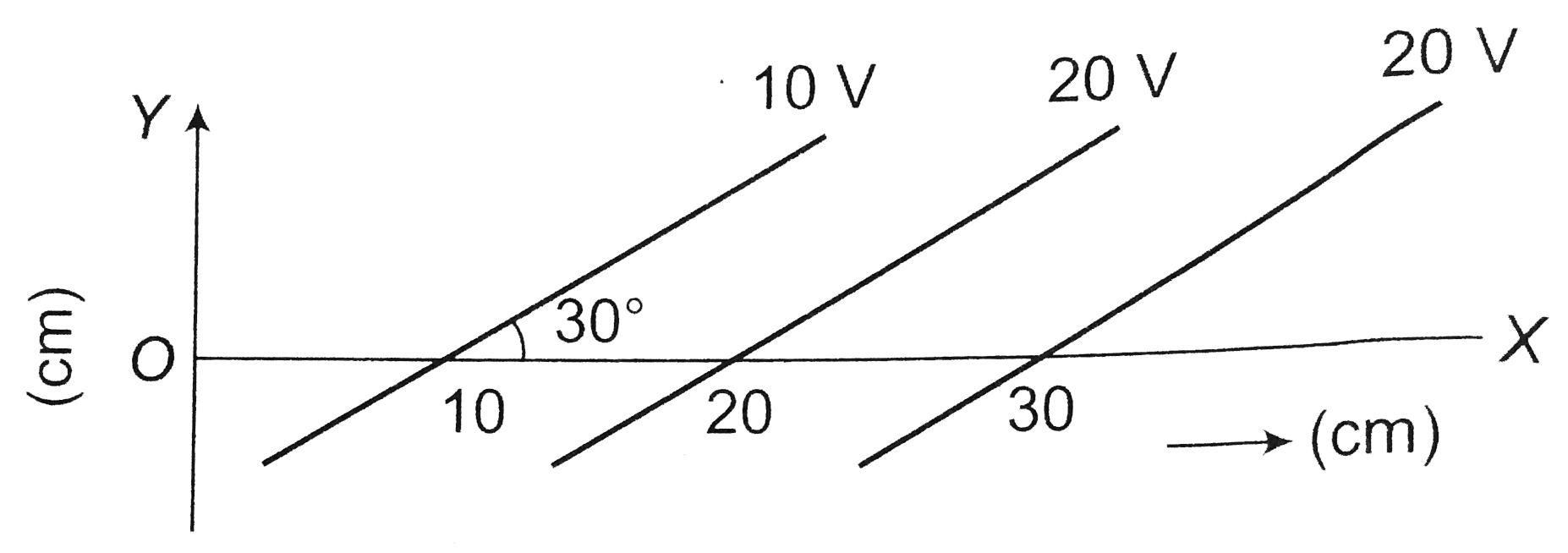 06:46View Solution
06:46View SolutionIn moving from A to B along an electric field line, the work done by the electric field on an electron is `6.4 xx 10^-19 J`. If `phi_1 and phi_2` are equipotential surfaces, then the potential difference `V_C - V_A ` is.
 .02:07View Solution
.02:07View SolutionElectric lines of force are as shown in the figure. Then potential at point `P`
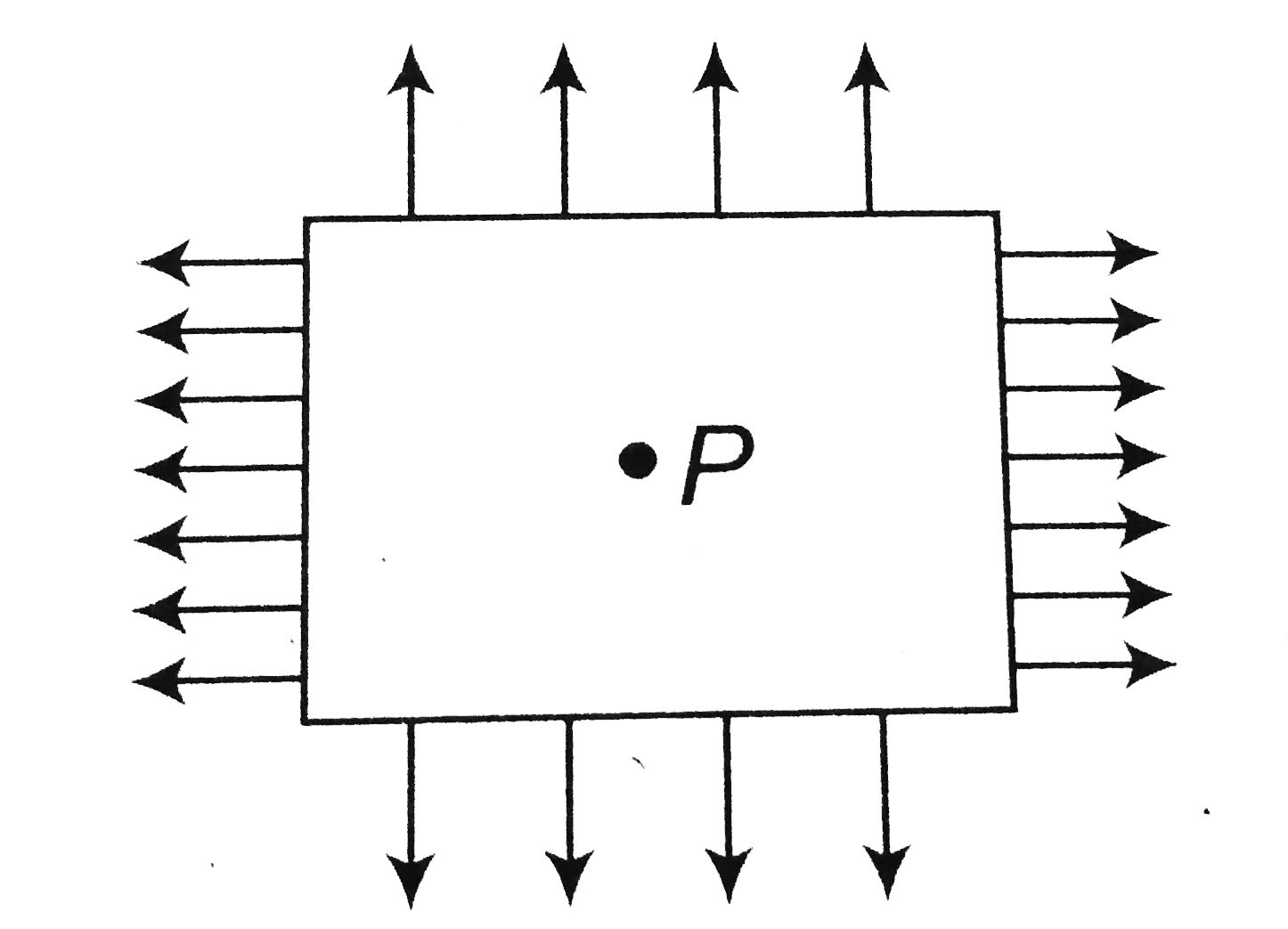 01:55View Solution
01:55View SolutionIn the electric field of a point chargde `q`, a cetrain charge is carried from point `A` to `B, C, D` and `E`. Then the ork done
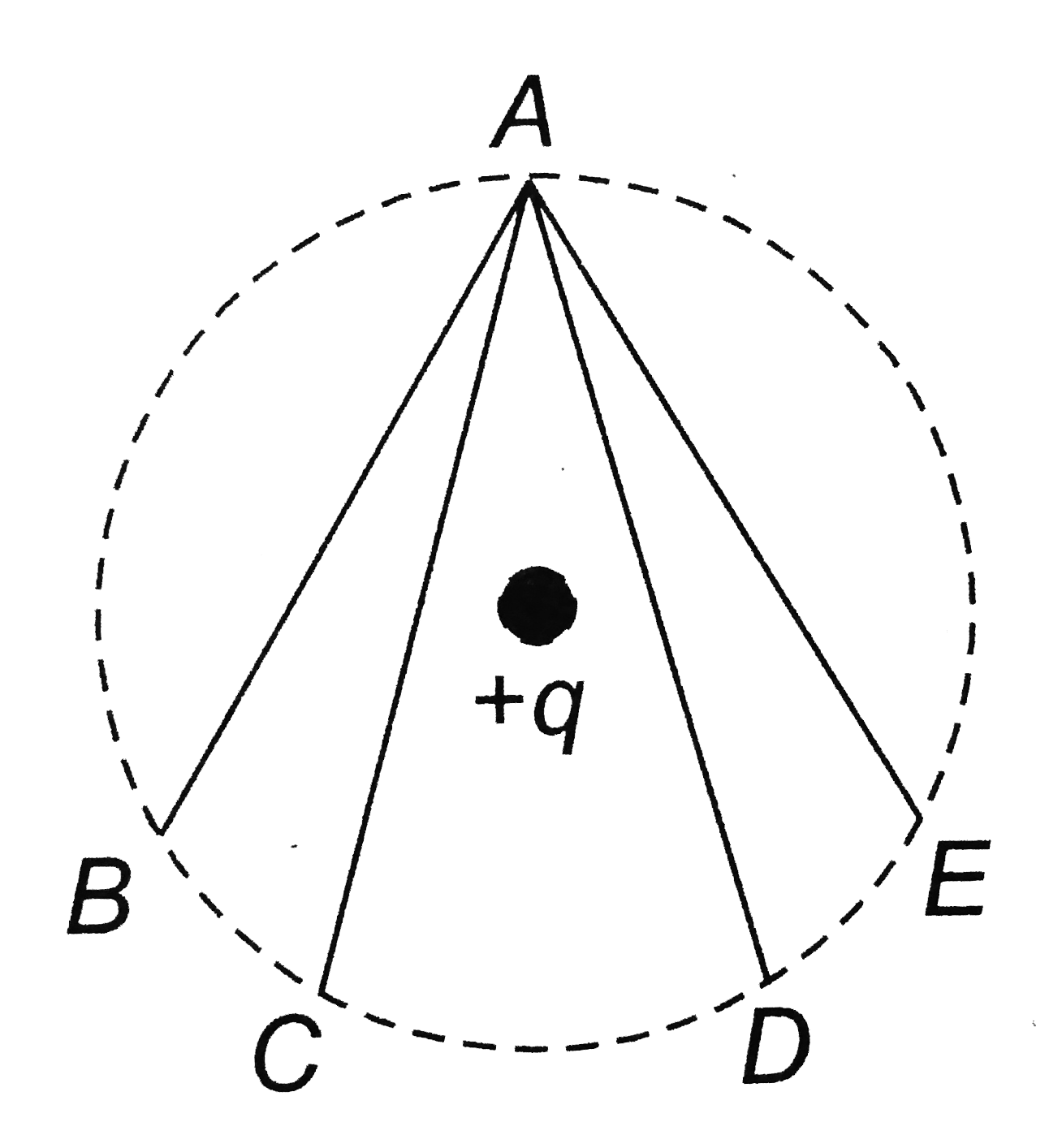 02:09View Solution
02:09View SolutionIn the firgure the charge `Q` is at the centre of the circle. Work done is maximum when another charge is taken from point `P` to
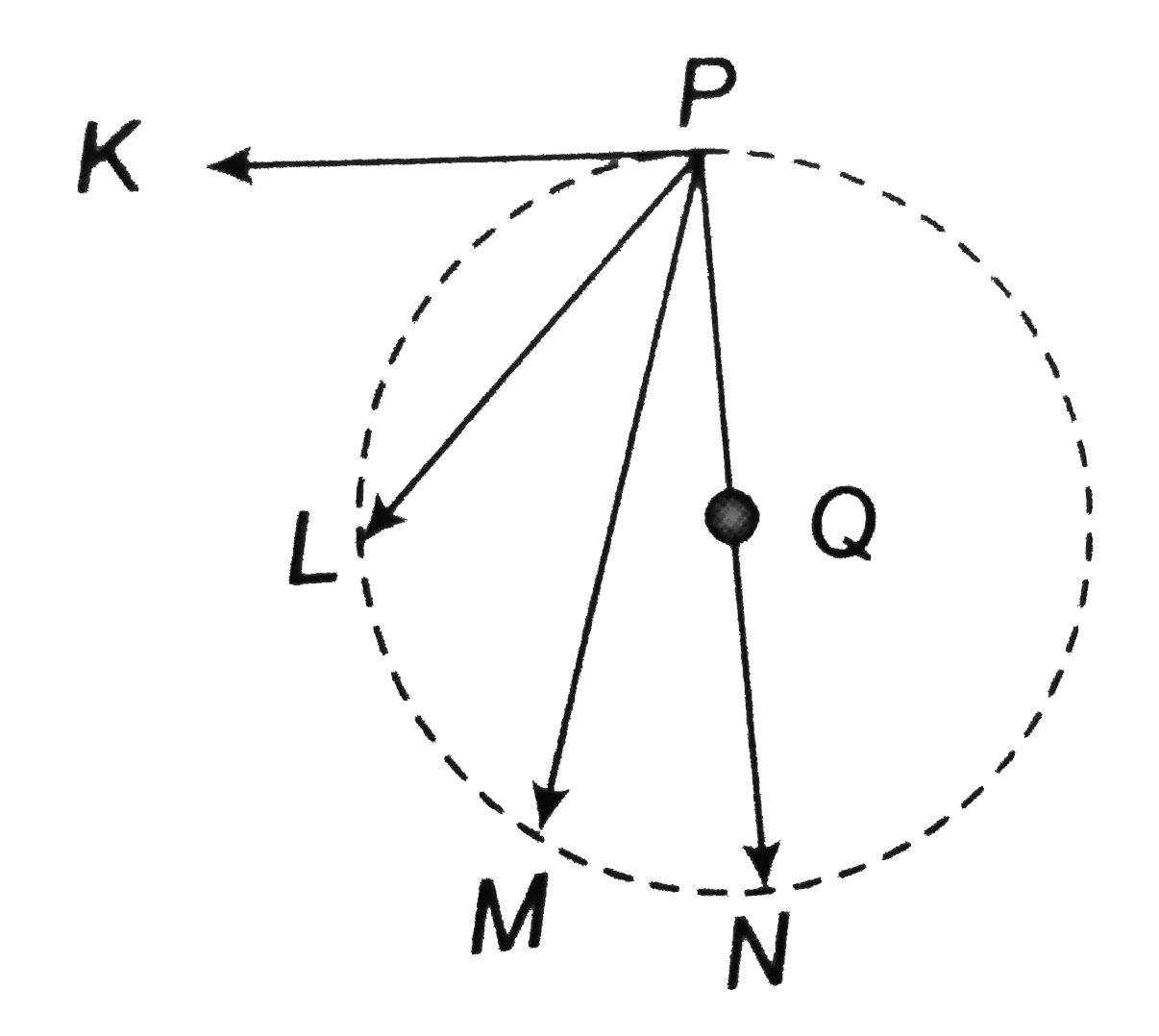 02:07View Solution
02:07View SolutionThe electric field intensity at all points in space is given by `vecE = sqrt(3)hati - hatj` volts//metre. The nature of equipotential lines is x-y plane is given by
02:35View SolutionA hollow metal sphere of radius `5 cm` is charged such that the potential on its surface is `10 V`. The potential at a distance of `2 cm` from the centre of the sphere
02:05View SolutionIn the following diagram the work done in moving a point charge from point `P` to point `A, B` and `C` is respectively as `W_(A), W_(B) and W_(C)`, then
 01:39View Solution
01:39View SolutionThere is `10` units of charge at the centre of a circle of radius `10 m`. The work done in moving `1` unit of charge around the circle once is
01:51View SolutionOn ortating a point charge having a charge `q` around a chrage `Q` in a circla of radius `r`. The work done will be
01:37View SolutionA metallic sphere has a charge of `10 mu C`. A unit negative charge is brought from `A` to `B` both `100 cm` away from the sphere but `A` being east of it while `B` being on west. The net work done is
02:11View SolutionThere is an electric field E in the x - direction. If the work done by the electric field in moving a charge of `0.2 C` through a distance of `2 m` along a line making an angle `60^(@)` with the x- axis is `4 J`, then what is the value of E ?
02:15View SolutionFour equal charges `Q` are placed at the four corners of a square of each side is 'a'. Work done in removing a charge `-Q` from its centre to infinity is
03:49View SolutionA particle `A` has chrage `+q` and a particle `B` has charge `+4q` with each of them having the same mass `m`. When allowed to fall from rest through the same electric potential difference, the ratio of their speed `(v_(A))/(v_(B))` will become
02:09View SolutionAn electric dipole of moment `vecp` is placed normal to the lines of force of electric intensity `vecE`, then the work done in deflecting it through an angle of `180^(@)` is
02:13View SolutionTwo opposite and equal charges `4 xx 10^(-8)` coulomb when placed `2 xx 10^(-2) cm` away, form a dipole. If dipole is placed in an external electric field `4 xx 10^(8)N//C`, the value of maximum torque and the work done in rotating it through `180^(@)` will be
02:57View SolutionFour idenbtial charges `+50 mu C` each are placed, one at each corner of a square of side `2 m`. How much external energy is required to bring another charge of `+50 mu C` from infinity to the centre of the square
(Given `(1)/(4pi epsilon_(0)) = 9 xx 10^(9)(Nm^(2))/(C^(2)))`02:45View SolutionTwo point charges `100 mu C` and `5 mu C` are placed at points `A and B` respectively with `AB = 40 cm`. The work done by external froce in displacing the charge `5 mu C` from B to C, where `BC = 30 cm`, angle `ABC = (pi)/(2)` and `(1)/(4pi epsilon_(0)) = 9 xx 10^(9)Nm^(2)//C^(2)`
03:31View SolutionAn `alpha`-particle is accelerated through a.p.d of `10^(6)` volt the `K.E.` of particle will be
00:59View SolutionA chrage of `5 C` is given a displacement of `0.5 m`. The work done in the process is `10 J`. The potetnial difference between the two points will be
01:13View SolutionHow much kinetic energy will be gained by an `alpha-`particle in going from a point at `70 V` to another point at `50 V`
01:39View SolutionThe ratio of moment of an electron and an `alpha`-particle which are accelerated from rest by a potential difference of `100V` is
01:55View SolutionA proton is accelerated through `50,000 V`. Its energy will increase by
02:05View SolutionWhen a proton is accelerated through `1 V`, then its kinetic energy will be
01:13View SolutionTwo positive point charges of `12 mu C` and `8 mu C` are `10 cm` apart. The work done in bringing then `4 cm` closer is
02:56View SolutionThe displacement of a chrage `Q` in the electric field
`E = e_(1)hati + e_(2)hatj + e_(3)hatk " is " vecr = ahati + bhatj`. The work done is02:14View SolutionAn electron of mass `m` and charge `e` is accelerated from rest through a potential difference `V` in vacuum. The final speed of the electron will be
02:01View SolutionIn the rectangle, shown below, the two corners have charges `q_(1) = - 5mu C` and `q_(2) = + 2.0 mu C`. The work done in moving a charge `+3.0 mu C` from `B` to `A` is (take `1//4 pi epsilon_(0) = 10^(10) N-m^(2)//C^(2))`
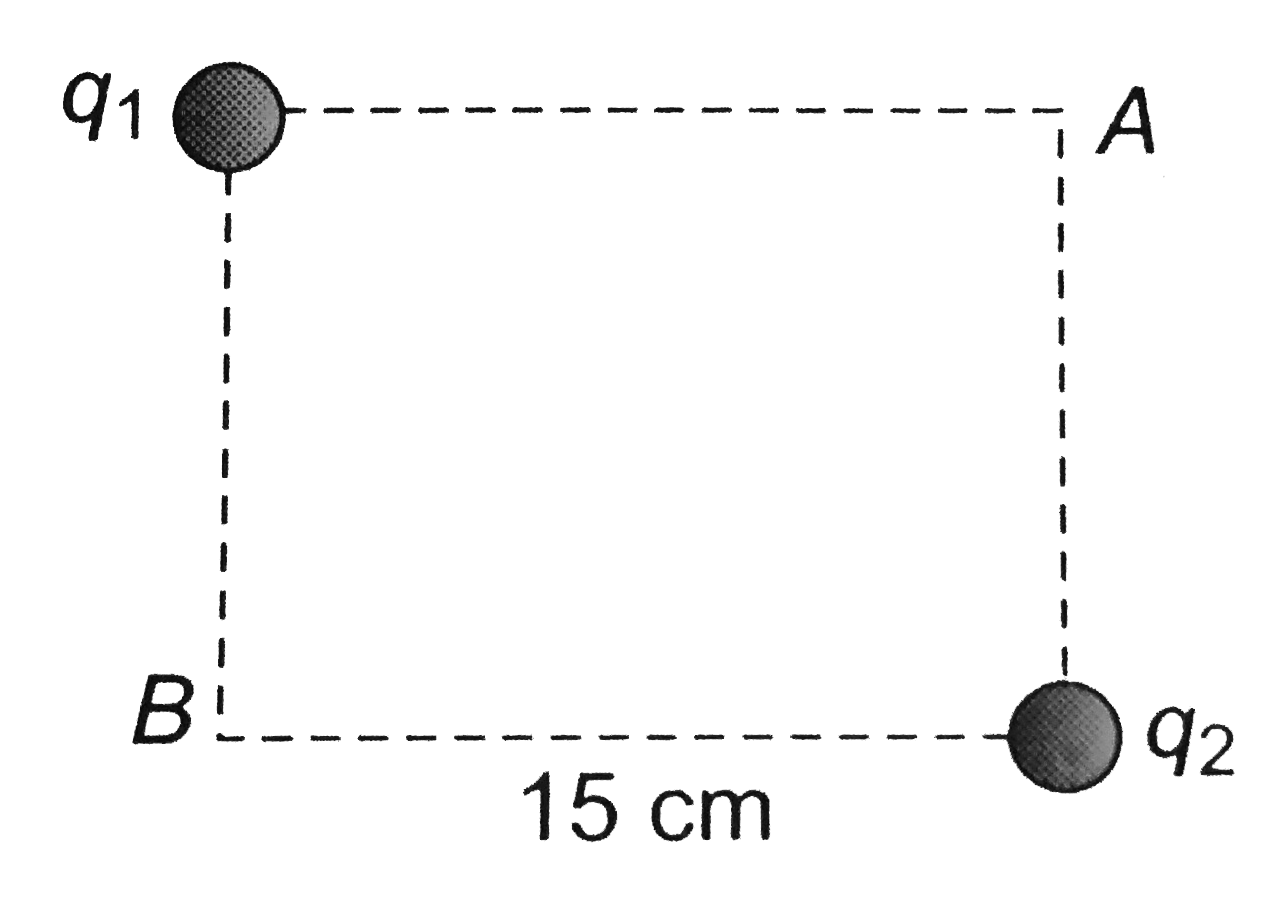 04:48View Solution
04:48View SolutionA charge `(-q)` and another charge `(Q)` are kept at two points `A and B` respectively. Keeping the charge `(+Q)` fixed at `B`, the charge `(-q)` at `A` is moved to another point `C` such that `ABC` forms an equilateral triangle of side `l`. The net work done in moving teh charge `(-q)` is
02:39View SolutionA particle of mass 'm' and charge 'q' is accelerated through a potential difference of `V` volt, its energy will be
01:10View SolutionA ball of mass `1g` and charge `10^(-8) C` moves from a point `A`. Where potential is `600` volt to the point `B` where potential is zero. Velocity of the ball at the point `B` is `20 cm//s`. The velocity of the ball at the point `A` will be
05:46View SolutionThe work done in bringing a `20` coulomb charge from point `A` to point `B` for disatnce `0.2 m` is `2 J`. The potential difference between the two points will be (in volt)
01:18View SolutionIf `4 xx 10^(20)eV` energy is required to move a charge of `0.25` coulomb between two points. Then what will be the potential difference between them ?
01:41View SolutionKinetic energy of an electron accelerated in a potential difference of `100 V` is
01:14View SolutionAn `alpha-` particle is accelerated through a potential difference of `200 V`. The increase in its kinetic energy is
01:21View SolutionA particle has a mass `400` times than that of the elctron and charge is double than that of aelectron. It is accelerated by `5 V` of potential difference. Initially the particle was at rest, then its final kinetic energy will be
02:02View SolutionAn electron (charge `= 1.6 xx 10^(-19)` coulomb) is accelerated through a potential of `1,00,000` volts. The energy required by the electron is
01:53View SolutionThe charge given to a hollow sphere of radius `10 cm` is `3.2 xx 10^(-19)` coulomb. At a distance of `4 cm` from its centre, the electric potetnial will be
02:10View SolutionWork done in moving a positive charge on an equipotential surafce is
01:29View SolutionThere are two equipotential surafce as shown in figure. The distance between them is `r`. The charged of `-q` coulomb is taken from the surface A to B, the resultant work done will be
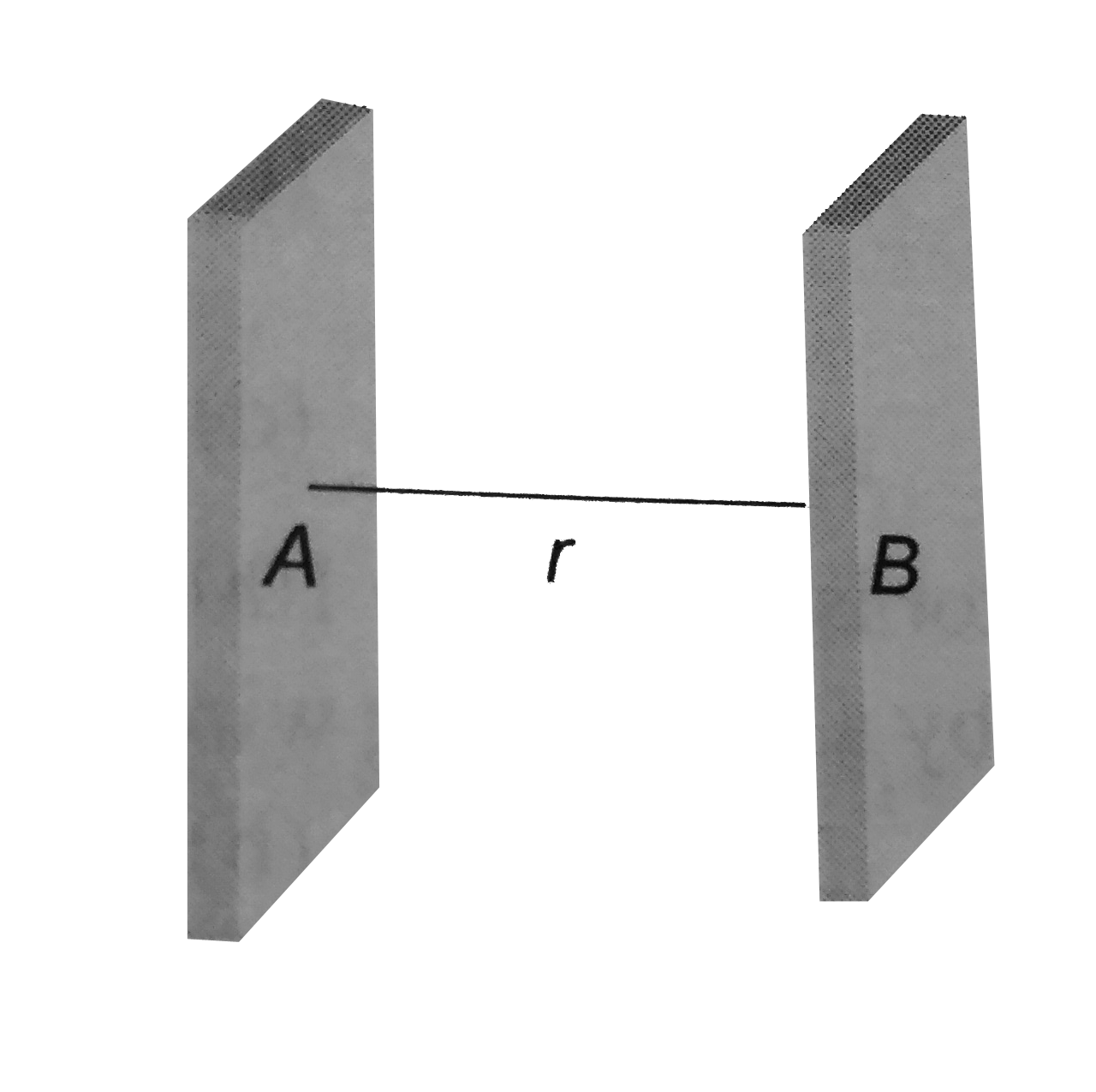 01:22View Solution
01:22View SolutionThe work done in carrying a charge of `5 mu C` form a point `A` to a point `B` in an electric field is `10mJ`. The potential difference `(V_(B) - V_(A))` is then
01:24View SolutionIf an electron moves from rest from a point at which potential is `50` volt to another point at which potential is `70` volt, then its kinetic energy in the final state will be
01:57View Solution
Euipotentials questions and complete solutions for chapter ELECTRIC POTENTIAL & CAPACITANCE of A2Z PHYSICS (HINGLISH) of Class 12
All Exercises from A2Z Class 12 PHYSICS ELECTRIC POTENTIAL & CAPACITANCE
- AIIMS Questions
- AIPMTNEET Questions
- Assertion Reason
- Capacitor
- Capacitor Circuits
- Capacitor With Dielectric
- Electric Potential
- Electric Potential Energy
- Euipotentials
- Grouping Of Capacitors
- Problems Based On Mixed Concepts
- Relation Between Electric Field And Potential
- Section B - Assertion Reasoning
- Section D - Chapter End Test
